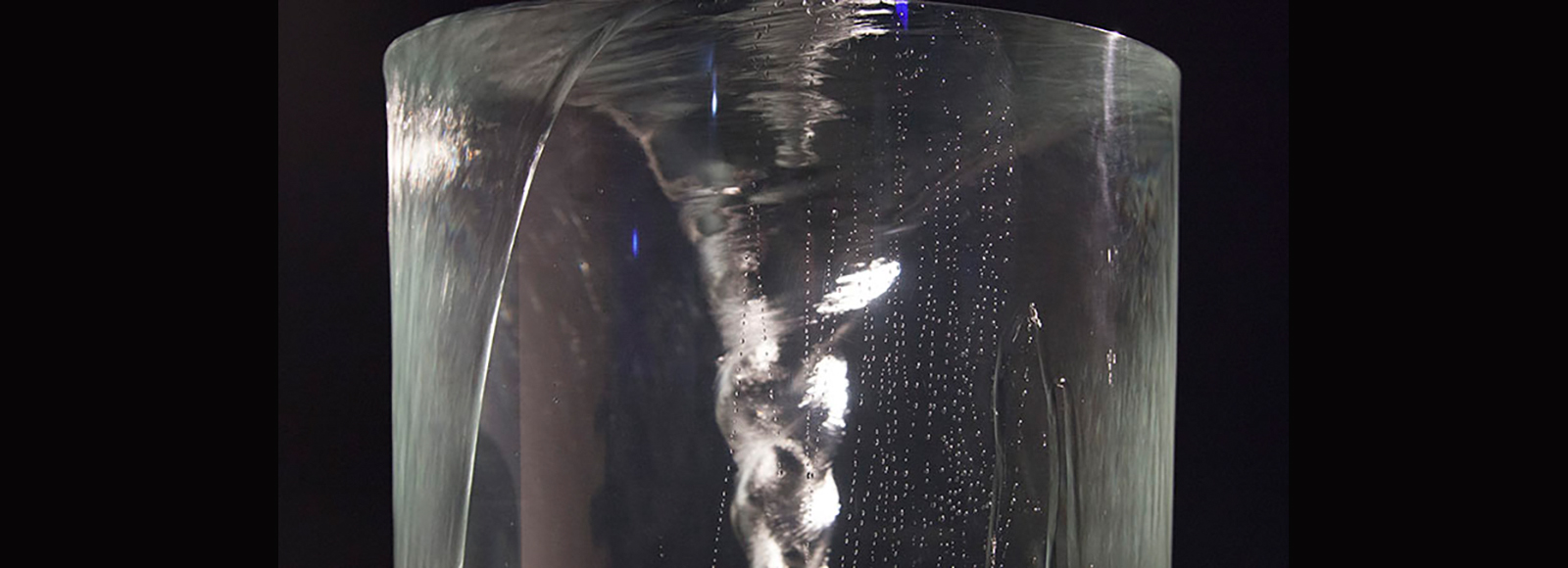
Black Hole Horizon is a new artwork created by UNSW Art & Design artist and researcher, Dr Lily Hibberd, after completing a year-long residency working with scientists at Heriot-Watt University in Edinburgh.
Scientists at Heriot-Watt specialise in black holes, and they’ve built their own in a one-of-a-kind laboratory so they might understand how energy can be extracted and utilised. It’s a challenge given that the gravitational pull of black holes is so strong that nothing can escape – not even light.
The concept, suggested more than 50 years ago by physicist Professor Roger Penrose, is full of possibilities not just for scientists, but also artists, and Lily Hibberd from UNSW Art & Design is one. She’s interested in the strength of black hole’s spiralled-pull into its centre, but rather than exploring the phenomenon in a purely visual manner, Hibberd has focused on the relationship between sound, light, and matter. She’s also interested in making complex topics, like the Penrose Mechanism on Earth, and cutting-edge research, in areas like laser physics and quantum optics, accessible to wider audiences.
As part of the 2017 Edinburgh Science Festival, Hibberd created an extraordinary installation in the basement of Summerhall, Edinburgh’s newest and largest arts and cultural venue. Hibberd’s work, amazing to behold as it appears physically impossible, is an artist's interpretation of a black hole. Hibberd explains, “it’s an analogue black hole, looking at the effects of the black hole using light and sound as an analogue of gravity, and in this case, also using fluid.”
Lily Hibberd is a recipient of a Discovery Early Career Research Award funded by the Australian Research Council. She is based at UNSW Art & Design, working as an interdisciplinary artist, writer, and curator. Her projects are developed in long-term participatory art-research, forming unique collaborations with communities, artists, scientists, and historians.
Hibberd has exhibited nationally and internationally in major museums and festivals, including an exhibition on the origins and forgotten and invisible aspects of the capture of light, First Light, held at the Musée des arts et métiers, Paris (2015-16).
